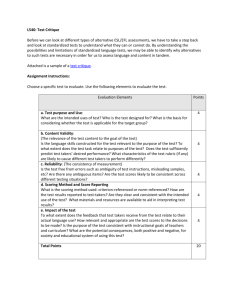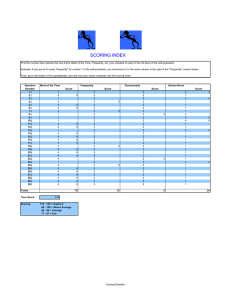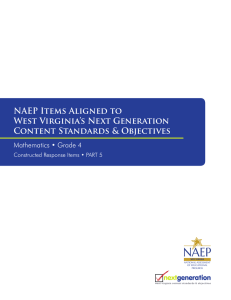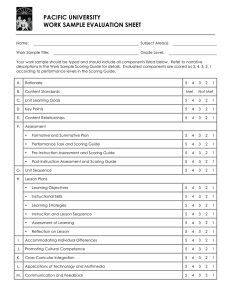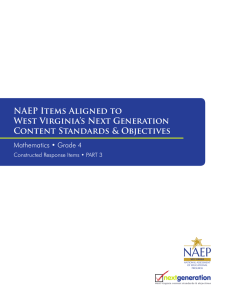Becoming Test Savvy Helps Demonstrate Knowledge and Skills:
advertisement
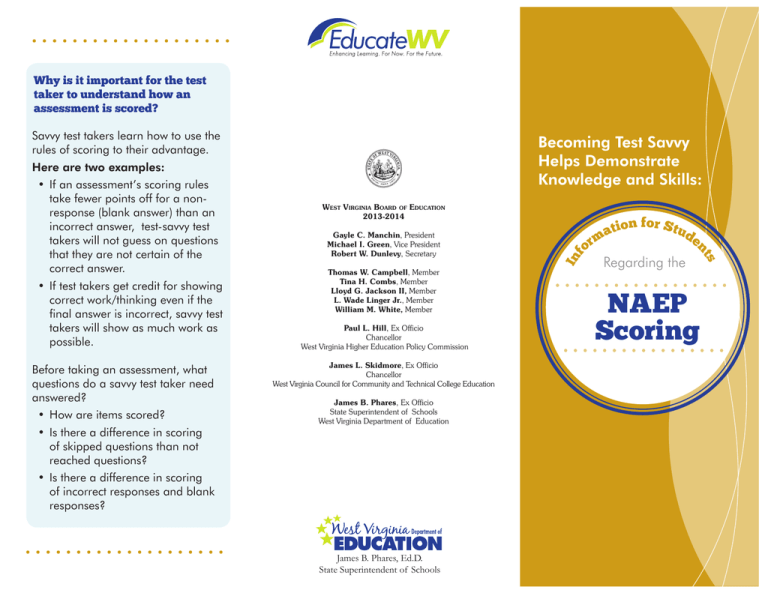
Why is it important for the test taker to understand how an assessment is scored? Before taking an assessment, what questions do a savvy test taker need answered? • How are items scored? • Is there a difference in scoring of skipped questions than not reached questions? • Is there a difference in scoring of incorrect responses and blank responses? Becoming Test Savvy Helps Demonstrate Knowledge and Skills: Gayle C. Manchin, President Michael I. Green, Vice President Robert W. Dunlevy, Secretary Thomas W. Campbell, Member Tina H. Combs, Member Lloyd G. Jackson II, Member L. Wade Linger Jr., Member William M. White, Member Paul L. Hill, Ex Officio Chancellor West Virginia Higher Education Policy Commission James L. Skidmore, Ex Officio Chancellor West Virginia Council for Community and Technical College Education James B. Phares, Ex Officio State Superintendent of Schools West Virginia Department of Education James B. Phares, Ed.D. State Superintendent of Schools In f West Virginia Board of Education 2013-2014 tion for Stud a m e or Regarding the s nt Savvy test takers learn how to use the rules of scoring to their advantage. Here are two examples: • If an assessment’s scoring rules take fewer points off for a nonresponse (blank answer) than an incorrect answer, test-savvy test takers will not guess on questions that they are not certain of the correct answer. • If test takers get credit for showing correct work/thinking even if the final answer is incorrect, savvy test takers will show as much work as possible. NAEP Scoring What is NAEP? The National Assessment of Educational Progress (NAEP) is the largest nationally representative and continuing assessment of what America’s students know and can do in various subject areas. Assessments are conducted periodically in mathematics, reading, science, writing, the arts, civics, economics, geography, and U.S. history. NAEP results are reported publicly as the “Nation’s Report Card.” Scores are reported for the nation, states and some large districts. Student scores are not reported individually, but are combined with other students in the state for an overall state score. Should students answer questions by guessing? Skipped questions are counted as incorrect; whereas, questions at the end of the test which students did not answer are considered “not reached” and not included in the assessment score. To the savvy test taker, this means if questions 1-12 are answered, but not questions 13-19, then questions 13-19 are considered not reached and will not be calculated in the score. However, if the test taker answers questions 1-12 and 19, but does not answer questions 13-18, then questions 13-18 are counted as omitted and will be calculated as incorrect answers. • If the student is unsure how to answer a question but could answer several questions after the difficult question, the student should guess or skip the question. • If the student feels he/she could make an “educated guess” to answer the question and could answer several questions after the difficult question, the student should attempt to answer the question. • If the student struggles with one question and does not feel confident about correctly answering many following questions, the student should continue to work on that question until time is called. How are constructed response items scored? Scoring guides on constructed response items, except on the NAEP Writing, do not include conventions of writing, such as grammar and sentence structure. If an item asks for a list, the response can be a bulleted list. It does not have to be in sentence form. On the mathematics test, the numerical answer might be written using numbers or words. Typically, a line is provided for the answer for each constructed response item; however, the answer is not required to be on the line. As long as the answer is written in the space immediately after the question, the answer will be scored. Some questions provide scoring cues. For example: • Cite evidence requires specific connections to the information provided in the question. • “Justify your answer” or “explain how you got your answer” requires an explanation of the thinking/reasoning behind the answer.

